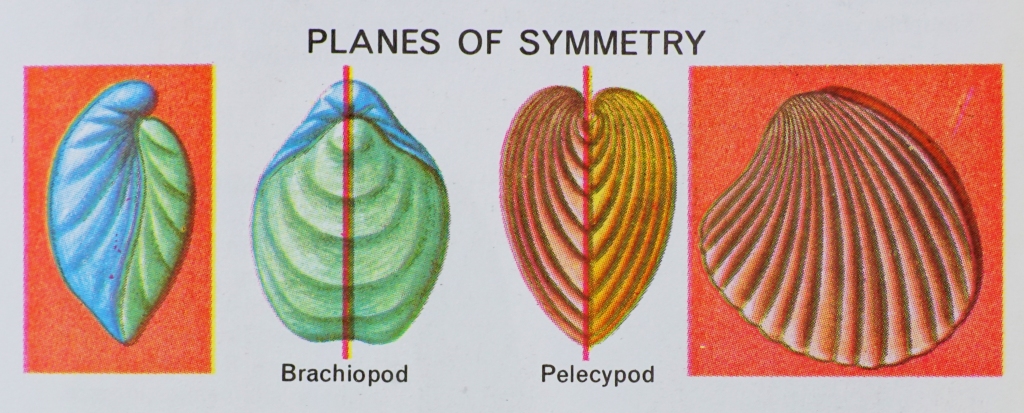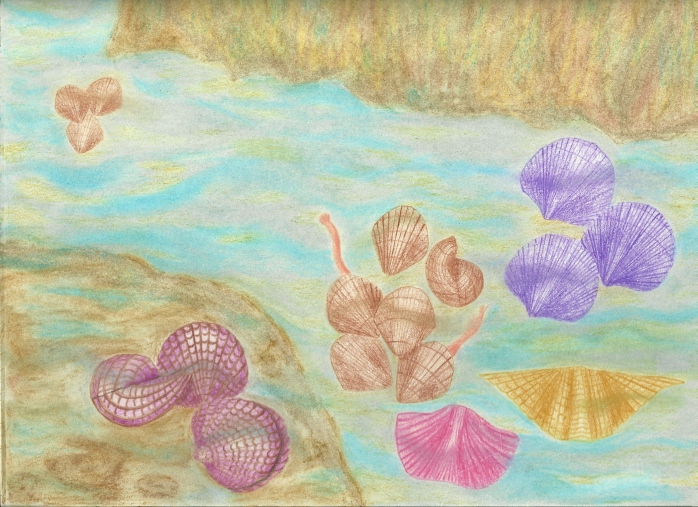No other organisms typify the Age of Invertebrates more than brachiopods. They are the most abundant Paleozoic fossils, except for maybe trilobites. Paleontologists use them to date rocks and other fossils along the same rock strata. Countless billions accumulated on the ocean floor with over 30,000 forms. Today, there are far fewer species, only about 300 species which live mostly in cold, deep ocean environments.
The brachiopod fossil specimens shown above and below are casts of the animal’s former shells which had filled with sediment after the creature died and later the sediment turned to stone leaving an impression of the shell. The original shells very possibly broke up into pieces and washed away settling onto the seafloor along with multitudes of other brachiopod and clam shells.

Thick shelled forms of brachiopods are ribbed and live in shallow water. Thin shelled forms are smooth and live in deep water. Some brachiopods grow to 9 inches across, but most are about an inch in diameter. They live in communities attached to objects by a muscular foot called a pedicle. They strain water in and out of their shells filtering microorganisms with their lophophores, a crown of tentacles.
Brachiopods were the first of their kind to lose mobility and develop a hard covering. They look like clams but are very different inside. To tell them apart, clams (pelecypods) have uneven shaped left and right shell valves, but the tops and bottoms are identical. Brachiopods have evenly shaped (symmetrical) left and right valves, but the bottom valve is smaller.

CLASSIFICATION
Common Name: Brachiopod or Lamp Shell (named for resemblance to ancient Roman oil lamps)
Kingdom: Animalia
Phylum: Brachiopoda (means arm and foot)
Class: Articulated (shells clamp together by a hinge)
Inarticulated (shells clamp together by a muscle)
Genus: Brown Sample possibly Pseudoatrypa sp Grey Sample possibly Atrypa, reticularis


